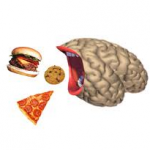 If we were as certain of the cure for cancer or heart disease as we are of the cure for obesity, think how many lives would be saved; these conditions could be virtually wiped out. We don’t need a scientific breakthrough to cure the obesity epidemic, for most people who do not have an underlying medical condition, we just need to eat less and move more.
If we were as certain of the cure for cancer or heart disease as we are of the cure for obesity, think how many lives would be saved; these conditions could be virtually wiped out. We don’t need a scientific breakthrough to cure the obesity epidemic, for most people who do not have an underlying medical condition, we just need to eat less and move more.
So if we know the cure why aren’t we using it? If so many people know what to do to get what they want, but don’t do it – why not? What is it that makes one person look at a cake and hear a voice that says “eat me”, and they do, and another person see the same cake and hear a voice that says “being slim feels better than that cake tastes” and not eat it. Understanding this is the key to success.
Diets don’t work. Numerous studies have shown that when people go on a restrictive diet they either give up before they achieve their goal, or if they do achieve it they usually regain the weight soon afterwards; yet fad diet after fad diet (usually promoted by a celebrity) tempts us to try over and over again despite numerous failures. However, it’s not all bad news; what has been shown in the scientific literature, is that when people receive behavioural support, although the rate of weight loss is slower, it continues until the weight is lost, and what’s even better, follow up studies have shown that 18 months later the weight stays off. (References below)
So there’s our answer– change how you behave! It sounds easy – but how exactly can you do that? Actually it’s not so hard to change a behaviour or a habit, you have to first understand what caused it in the first place. Everything we do is based on a feeling. We eat because we are hungry, that’s a physiological sensation – not a feeling. But when we eat when we are not hungry – we do so because we want the feeling that particular food gives us. If as a child every  time you got upset your mum said “stop crying and you can have a biscuit” then don’t be surprised if as an adult you turn to sweet “treats” to make you feel better whenever you are upset. You have simply become programmed to use food to make you feel better. The problem is, if you are fat and unhappy with how you look, it doesn’t make you feel better, it makes you feel worse. In spite of this you do it anyway because you are programmed to, but the good news is that programming can be changed.
time you got upset your mum said “stop crying and you can have a biscuit” then don’t be surprised if as an adult you turn to sweet “treats” to make you feel better whenever you are upset. You have simply become programmed to use food to make you feel better. The problem is, if you are fat and unhappy with how you look, it doesn’t make you feel better, it makes you feel worse. In spite of this you do it anyway because you are programmed to, but the good news is that programming can be changed.
Everything you do is because of a thought. Thoughts are the instructions we give to our brain that dictate our behaviour, so learning to think differently is crucial when you have something you want to change, whether it’s physical or emotional. If you take a moment now to think about what you think about, what instructions are you giving your brain? Because whatever they are – it will obey them. If you repeat those same instructions over and over again you wont even have to consciously think them anymore, they become your default setting.
When you naturally don’t eat the cake because you genuinely don’t want to, even though you know it would taste good, then you are guaranteed to lose weight. No will power required. Success is inevitable and when you achieve your new shape, because you feel so much better physically and emotionally, it cements the benefits of these thoughts and behaviours until there is no other way for you to be. Slim, health and happy. Not a diet in sight.
If you would like to learn some of these techniques in person come visit me at https://powertochange.me.uk/weight-loss to find out about books, audio courses and one day workshops. You will also learn about the power of TFT: thought field therapy, which can collapse cravings in minutes, as well as how to use self hypnosis and to change your internal chatter and much more.
The next one day workshops are Watford 12th May and Warrington 1st June.
References:

